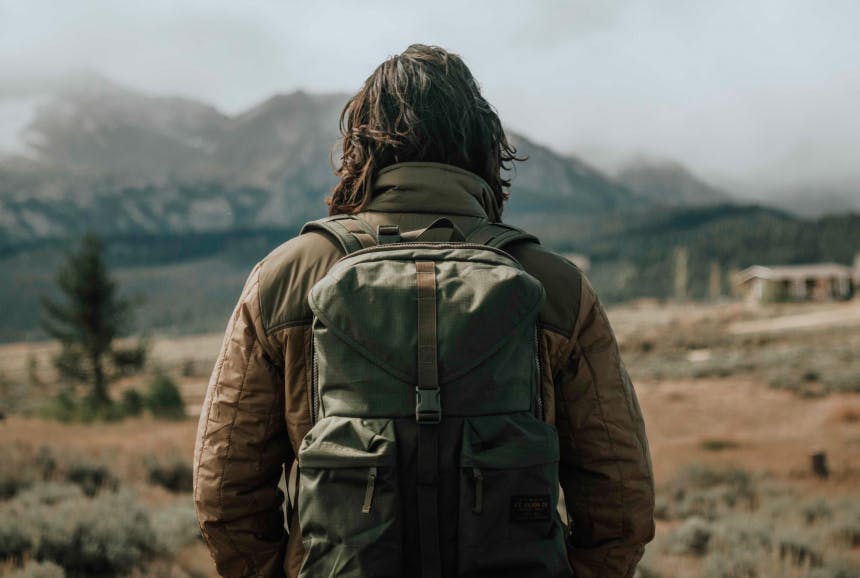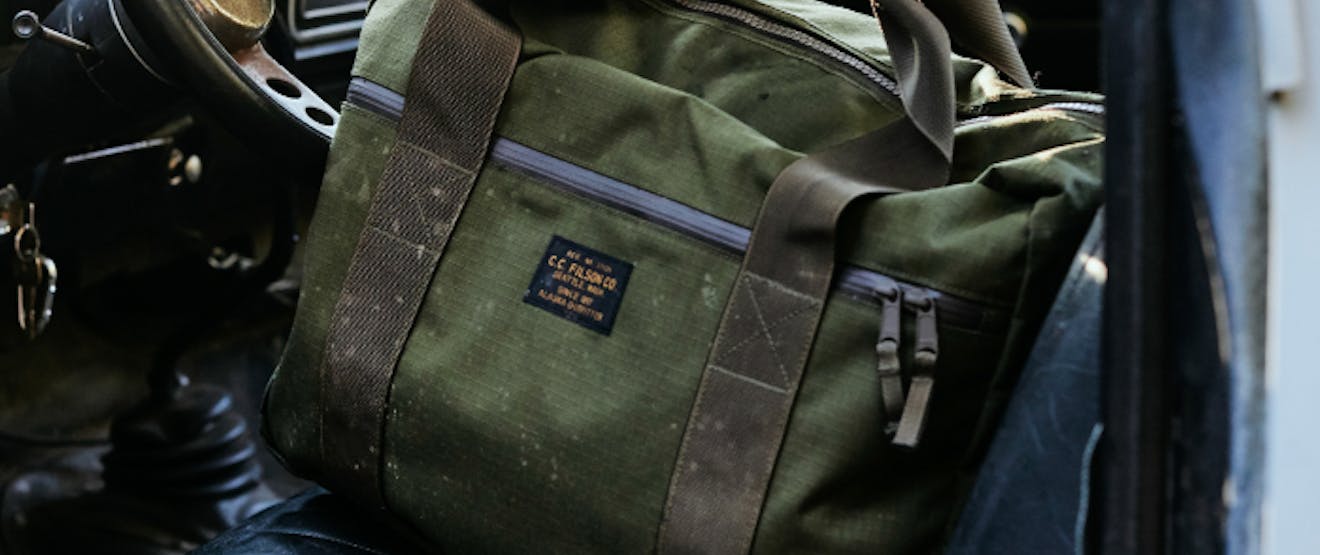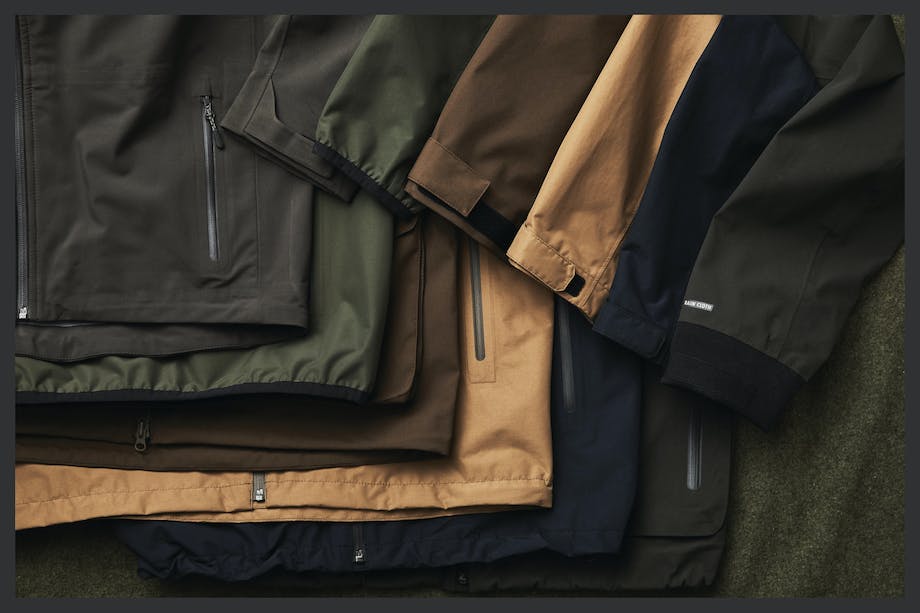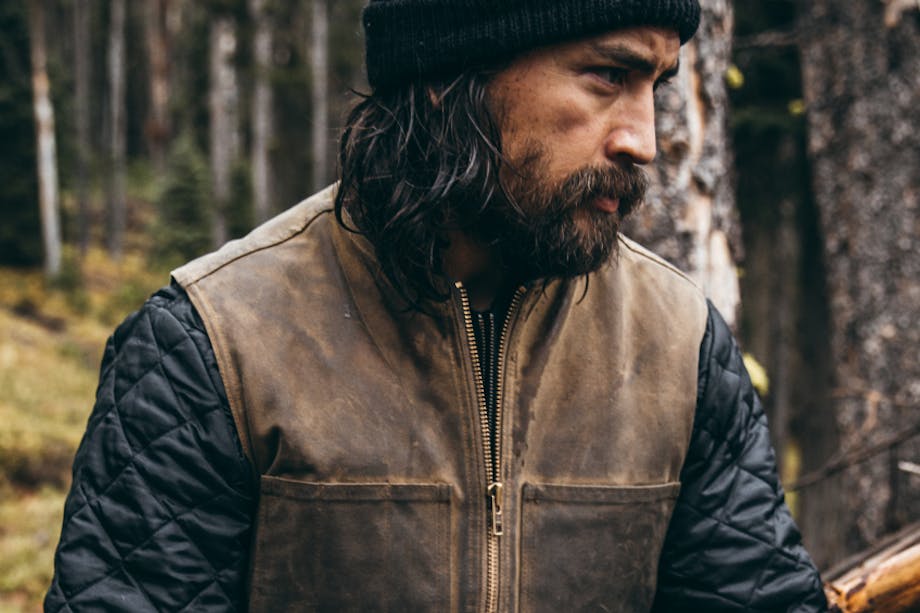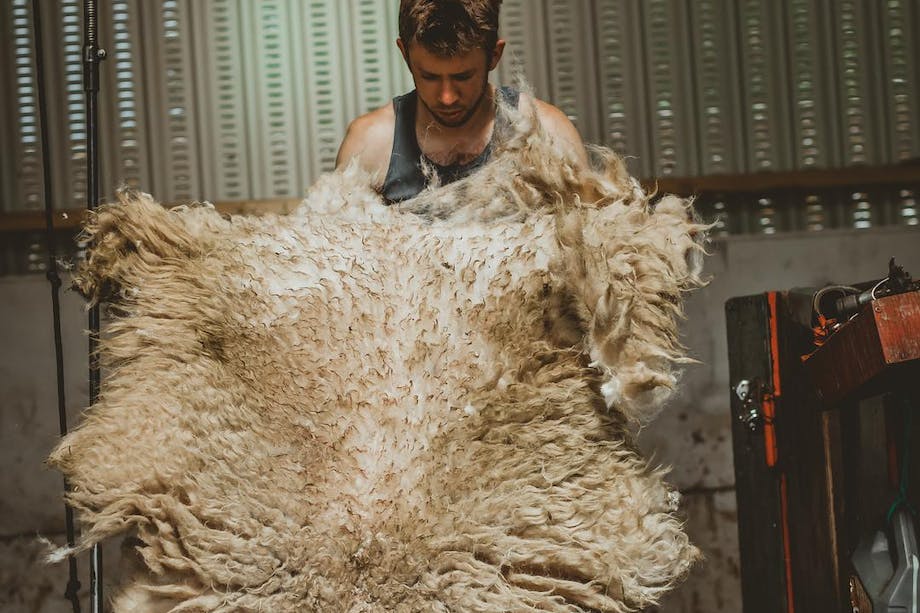80 Years in the Making
For nearly three decades, Filson luggage built with Rugged Twill and Bridle Leather has set the standard for toughness and dependability. Our newly-introduced collection of ripstop nylon luggage and bags captures that same rugged reliability, in a lighter and more flexible form. Ripstop nylon, with its crosshatch pattern of reinforcing threads, was instrumental to the allies during WWII, and later revolutionized backpacking gear. This article looks at what ripstop nylon is, how it came to be, and why it works so well.
The Nylon
The story behind ripstop nylon begins with the invention of nylon. In 1927, chemists of the DuPont™ Company began researching the polymerization of organic compounds with the goal of creating a synthetic fiber. They realized success when a patent was granted in 1938 for the fiber they called nylon. The first commercial use for nylon was in toothbrush bristles, and it was also used with great success in stockings.
Chemically speaking, nylon is a thermoplastic polymer. Practically speaking, it’s a smooth, solid-core fiber that is flexible, abrasion resistant, and that does not absorb water. It’s created as a liquid, then spun and dried into individual fibers. The fibers can be manufactured with diameters finer than a spider’s web, or thick and strong enough to land a chinook salmon. Nylon is well suited for uses in harsh environments due to its elasticity and abrasion resistance.
Not only has ripstop served our military’s need for parachutes and uniforms, it has proven its worth in many other uses.
The Ripstop
After America entered WWII, many U.S. manufacturers, including DuPont, converted their production from consumer goods to materiel for the military. The nylon produced by DuPont was used to manufacture ropes, cords, and parachutes–replacing the silk that to that point had been imported from Asia. Parachutes must be both lightweight and strong. To meet these requirements, a new reinforced-nylon fabric was developed. This fabric is called ripstop, because stopping rips from spreading is exactly what it does.
Ripstop is made by incorporating strong threads into the weave of a fabric in a repeating crisscross pattern. These threads significantly increase the tear-strength of the fabric, and are normally only noticeable under close examination. Ripstop reinforcing can be added to most any plain-weave or canvas fabric, including cotton, polyester, linen, and nylon. The threads used to create the reinforcing grid are most frequently nylon due to its tough, abrasion-resistant properties. Not only has ripstop served our military’s need for parachutes and uniforms, it has proven its worth as a material for sails, backpacks, tents, and countless other types of gear for which strength and lightness of weight are priorities.
What Ripstop Does
We should remember that the fabric is called ripstop, not rip-proof – an important distinction. If a hole develops in the fabric as a result of abrasion, puncture or melting, enough tension on the fabric can cause the hole to expand by tearing. The ripstop pattern acts like a fence, containing that tear within the boundaries of the grid-square. So, If a parachute develops a small hole, the ripstop reinforcing can prevent that hole from turning into catastrophic failure. Or if a campfire spark melts a small hole in a backpack on a week-long excursion, the ripstop fabric can help prevent further damage that could ruin the trip.
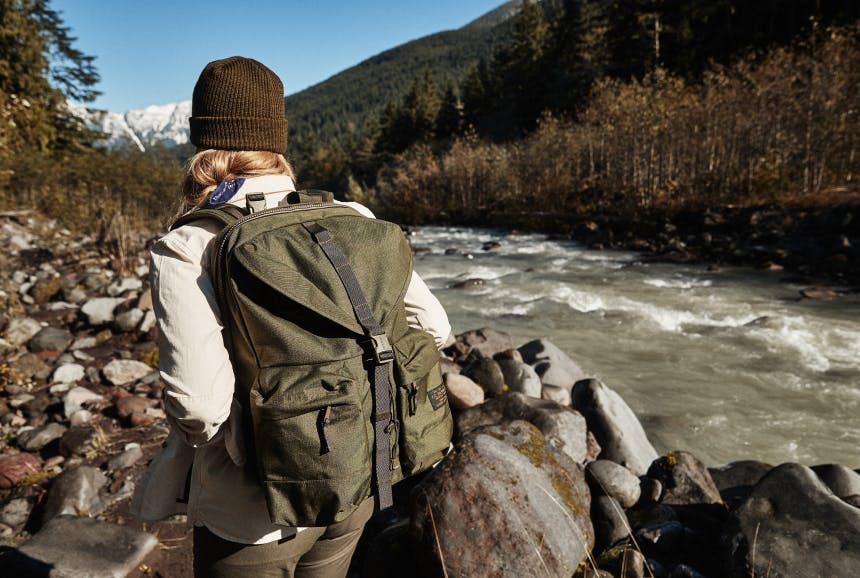
RIPSTOP NYLON BACKPACK - Item No. 20115929
Filson Ripstop
The use of ripstop is not limited to ultralight applications, however. Heavier, thicker fabrics can be made exceptionally strong by incorporating ripstop reinforcement into the weave. This is exactly what we’ve done with our new Ripstop Nylon luggage and bags. The midweight 500-denier Cordura® nylon fabric is extremely abrasion resistant to start with, and the heavy-duty threads incorporated into ripstop weave provide exceptional tear strength.
Our customers have trusted the toughness of Filson Rugged Twill duffles, field bags and briefcases for decades. Using Cordura ripstop nylon enables us to manufacture lighter-weight gear that matches our Rugged Twill’s legendary durability. The thinner fabric also increases our flexibility to include design elements not possible with thicker fabrics. Our Ripstop Nylon bags are feature-filled, and with Filson dependability, they offer true long-term value.
Ripstop is a very rugged fabric, born in unforgiving situations in which failure was simply not an option. With 80 years of proven durability, ripstop nylon is the ideal fabric to expand the range of Filson’s problem-solving gear.
